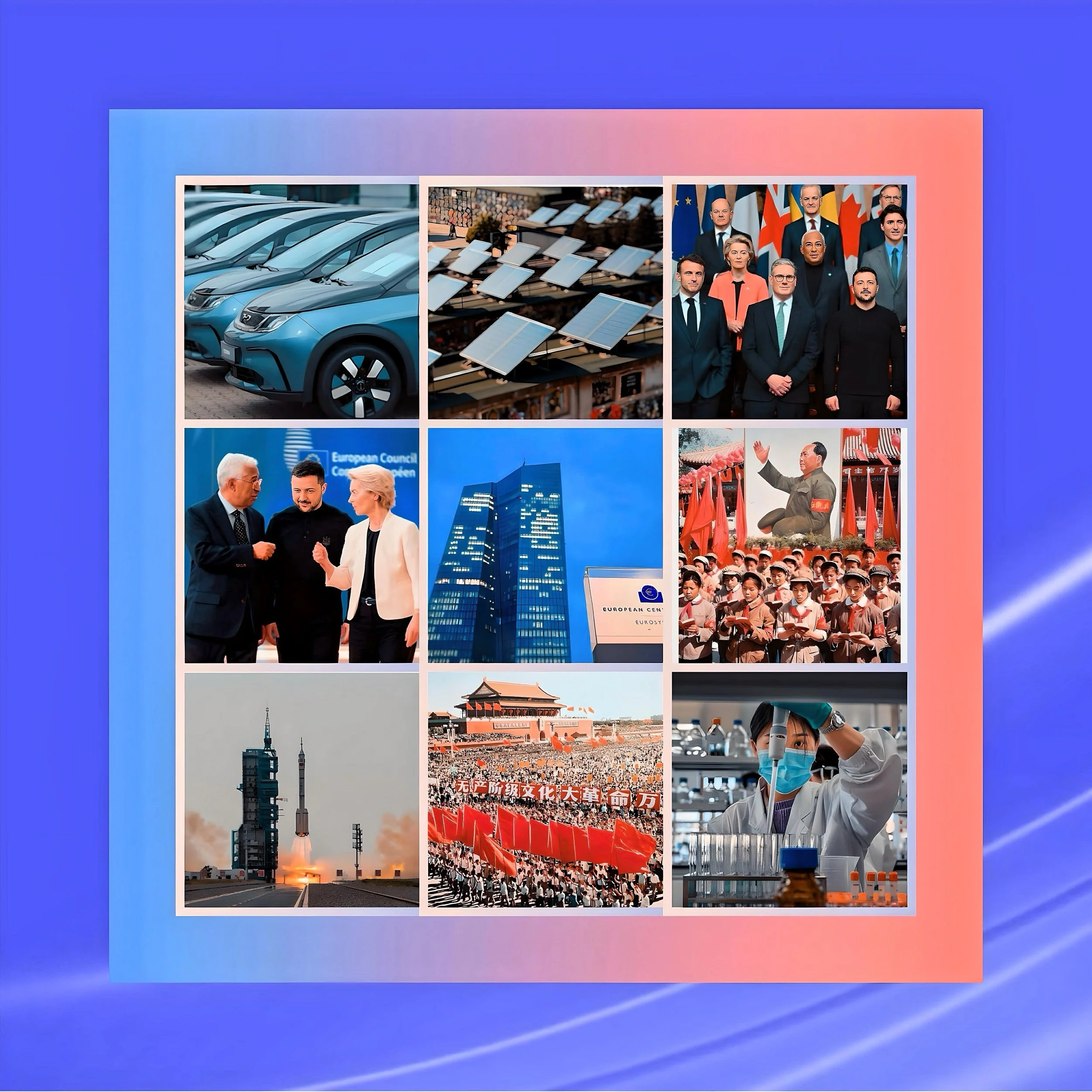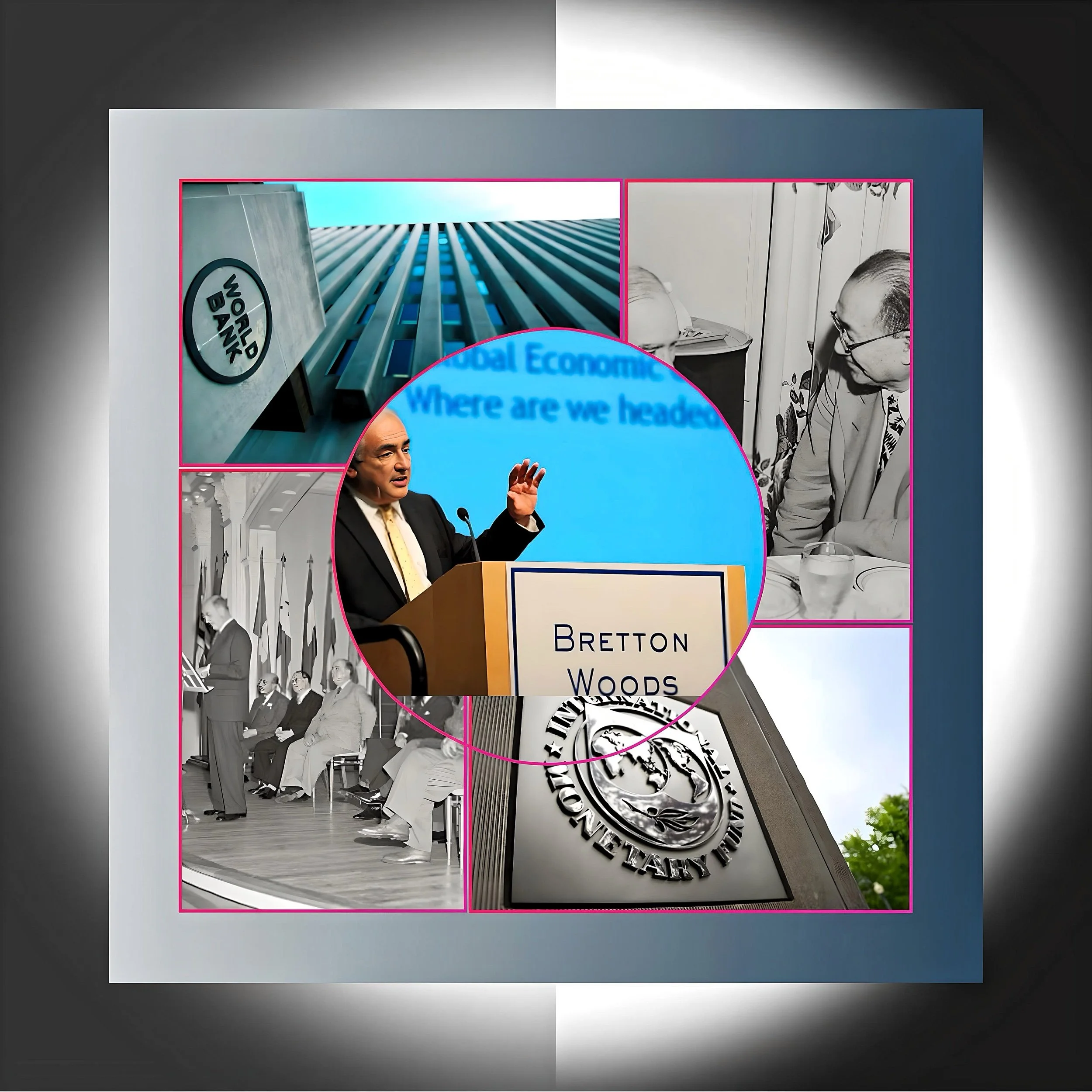Heavy Industry Is Europe’s Trump Card in Looming Security Competition with the United States
Introduction
The geopolitical landscape of the mid-2020s has thrust Europe into an unprecedented strategic recalibration.
With the United States under Donald Trump’s second administration retreating from its postwar role as Europe’s security guarantor, the continent faces a dual imperative: defending its national interests independently while countering external pressures from Washington and Beijing.
Europe’s unexpected advantage lies not in technological dominance or military parity. Still, it lies in its heavy industrial base—a sector often dismissed as an “old economy” yet now emerging as the cornerstone of its geopolitical resilience. Manufacturing industries spanning steel, vehicles, shipbuilding, and aerospace provide Europe with the productive capacity to rearm, sustain economic growth, and negotiate from a position of strength in an era of great-power competition.
Thakkar's publication reviews and analyzes how Europe’s industrial might shape its security trajectory, the challenges undermining this advantage, and the policy pathways to secure its future.
Europe’s Industrial Foundations: Comparative Strengths and Strategic Value
Manufacturing Output and Economic Backbone
Europe’s industrial sector remains the largest among advanced economies, contributing 16.4% of the EU’s gross value added compared to 11% in the United States.
Germany, the bloc’s industrial engine, leads in machinery, automotive, and chemical production, while France excels in aerospace and nuclear technology. In 2024, EU member states collectively produced 50% more steel than the United States and manufactured twice as many commercial aircraft through Airbus compared to Boeing’s crisis-diminished output.
This capacity is not merely economic but strategically vital: modern defense supply chains rely on the same upstream industries—steel, precision engineering, and advanced materials—that underpin civilian manufacturing.
Europe's shipbuilding sector exemplifies the symbiotic relationship between civilian and military production. Unlike the United States, where a withered commercial shipbuilding industry has led to cost overruns and delays in naval projects, European yards benefit from economies of scale.
For instance, Italy’s Fincantieri and Germany’s Thyssenkrupp Marine Systems leverage dual-use technologies developed for cruise ships and cargo vessels to streamline warship production. This integration ensures that Europe retains critical capabilities—such as turbine manufacturing and welding expertise—that cannot be rapidly reconstituted once lost.
Employment and Social Stability
With 30 million workers employed in manufacturing—more than double the U.S. figure—Europe’s industrial base also serves as a social stabilizer. Regions reliant on sectors like automotive (Wolfsburg in Germany) or aerospace (Toulouse in France) have avoided the deindustrialization-driven populism seen in parts of the American Midwest.
This workforce represents a latent mobilization potential: skilled engineers and machinists in civilian industries could be redirected to defense production in a crisis. However, this advantage is precarious. High energy costs, exacerbated by the post-Ukraine decoupling from Russian hydrocarbons, have eroded profit margins, with EU industrial electricity prices averaging €120/MWh versus €60/MWh in the United States.
Defense Industrial Implications: From Atrophy to Rearmament
The Rearmament Imperative
Russia’s invasion of Ukraine exposed glaring deficiencies in Europe’s defense stockpiles. As of 2025, EU nations face a cumulative €850 billion deficit in defense spending relative to NATO’s 2% GDP target over the past decade. However, Europe’s industrial infrastructure offers a rapid scaling pathway.
Rheinmetall, for instance, has tripled artillery shell production since 2022 by repurposing automotive supply chains, while Saab’s new Gripen-E fighter incorporates components from 300 SMEs across the EU.
Critically, Europe’s defense-industrial strategy must avoid replicating the U.S. model of niche, high-tech systems divorced from mass-production capabilities.
The U.S. Navy’s Littoral Combat Ship debacle—a $30 billion program yielding only 35 operationally flawed vessels—highlights the risks of prioritizing innovation over industrial depth. In contrast, Europe’s emphasis on mid-tech manufacturing (e.g., armored vehicles and drones) balances technological sophistication with scalability.
Poland’s PGZ group, for example, plans to produce 1,000 Borsuk infantry fighting vehicles by 2027 using modular designs that share components with civilian trucks.
Fragmentation and Consolidation Challenges
Despite these strengths, the EU defense market remains Balkanized. A 2023 ITIF study found that Europe has 178 separate weapons programs versus 27 in the United States, leading to duplicative R&D and incompatible systems.
France’s Nexter and Germany’s KMW merged in 2015 to form KNDS, yet national procurement preferences persist: Germany’s Leopard 2 tank fleet uses a different ammunition caliber than France’s Leclerc, complicating joint logistics.
The European Commission’s proposed Defense Industrial Strategy (EDIS) aims to address this by mandating 60% intra-EU defense procurement by 2035, but resistance from smaller states fearing industrial marginalization remains a hurdle.
Transatlantic Trade Dynamics: Tariffs, Tech, and Strategic Decoupling
Asymmetric Interdependence
Stark sectoral imbalances mark the U.S.-EU trade relationship. In 2023, the EU ran a €155.8 billion goods surplus with the United States, dominated by machinery (€62 billion), pharmaceuticals (€38 billion), and vehicles (€54 billion). Conversely, the EU depends on U.S. energy exports (€112 billion in LNG and crude oil) and tech services, where American firms control 78% of the EU’s cloud computing market.
This interdependence has become a fault line under Trump’s proposed 10-20% across-the-board tariffs, targeting Europe’s auto exports to offset the U.S. trade deficit.
European automakers have adopted a hedging strategy. BMW and Volvo are expanding U.S. production in South Carolina and South Carolina, respectively, while lobbying Brussels for retaliatory measures against Chinese EV imports that could backfill lost transatlantic trade.
However, this two-front challenge—U.S. protectionism and Chinese overcapacity—threatens to squeeze EU manufacturers. As Chinese brands captured emerging markets, Germany’s net vehicle exports halved from 2019 to 2024 (2.1 million to 1.05 million units).
Tech vs. Manufacturing: Divergent Trajectories
While the United States leads in AI, semiconductors, and software, Europe’s niche lies in industrial digitalization. For instance, Siemens’ Digital Industries division reported €9.4 billion in 2024 revenue from factory automation systems used by 70% of EU manufacturers.
This “Industry 4.0” ecosystem—combining German mechanical engineering with Dutch lithography (ASML) and Finnish telecom infrastructure (Nokia)—provides a buffer against U.S. tech dominance. However, reliance on American cloud providers (AWS, Azure) for data storage and AI training risks ceding long-term control over industrial data flows.
The China Factor: Overcapacity and Secondary Sanctions
China’s Export Tsunami and European Vulnerability
Beijing’s post-2021 industrial policy pivot—diverting capital from real estate to advanced manufacturing—has unleashed a flood of subsidized exports.
Chinese EV production surged from 1.3 million units in 2020 to 8.7 million in 2024, with EU market share rising from 3% to 19% in the same period. European steelmakers face similar pressure, with Chinese exports undercutting EU prices by 30% despite 25% safeguard tariffs.
The security implications are acute. In 2024, China’s CATL delayed battery shipments to Sweden’s Northvolt—a critical supplier to EU defense contractors—amid tensions over Taiwan.
Such coercive tactics mirror Russia’s energy weaponization, exploiting Europe’s dependency on China, its rare earth (98% of EU permanent magnet imports), and solar components (85% from China).
EU Countermeasures: Between Protectionism and Partnership
The European Commission’s Clean Industrial Deal proposes €400 billion in green subsidies to onshore clean tech production, mirroring the U.S. Inflation Reduction Act.
However, internal divisions persist: Germany opposes broad anti-dumping duties, fearing Chinese retaliation against its automotive exports, while France advocates “EU first” procurement rules for wind turbines and batteries.
A potential breakthrough lies in “climate clubs”—preferential trade agreements with nations meeting EU labor and environmental standards.
Early talks with Canada, South Korea, and Mercosur aim to create a 50-nation bloc accounting for 65% of global GDP, excluding China.
Policy Pathways: Securing Europe’s Industrial Future
Fiscal and Industrial Strategy Adjustments
The incoming German government’s €500 billion defense and infrastructure package (11% of GDP) signals a paradigm shift, discarding the constitutional debt brake to fund dual-use infrastructure like 5G-enabled “smart ports.” Brussels is designing a European Sovereignty Fund to avoid inflation using joint EU debt to finance cross-border rail upgrades, hydrogen pipelines, and semiconductor fabs.
Defense industrial policy requires deeper coordination. The “Airbus model”—distributing production across member states to secure political buy-in—is being replicated in the Future Combat Air System (FCAS), with Dassault (France), Airbus (Germany), and Indra (Spain) sharing workshares.
Meanwhile, the EU Defense Innovation Accelerator (EUDA) funds startups like Estonia’s Milrem Robotics, whose THeMIS uncrewed ground vehicle is now deployed in Ukraine.
Navigating the U.S.-China Crossfire
Europe’s optimal strategy involves asymmetric reciprocity: leveraging manufacturing indispensability to secure exemptions from U.S. tariffs while accelerating China's de-risking. For example, offering to quadruple U.S. LNG imports (from 18 cm to 70 cm by 2030) could persuade Trump to exclude EU chemicals from tariffs, preserving a €28 billion export sector.
Concurrently, the EU must finalize its Anti-Coercion Instrument (ACI), which would enable rapid retaliation against Chinese trade actions without requiring unanimity.
Conclusion
Industry as the Fulcrum of Sovereignty
Europe’s heavy industry, long seen as a relic of the first Industrial Revolution, has emerged as the continent’s primary instrument of strategic autonomy.
Unlike the United States, whose defense-industrial base atrophied after the Cold War, or China, whose state-driven overcapacity invites global backlash, Europe retains a balanced ecosystem of SMEs, international champions, and research institutes.
However, preserving this edge demands unprecedented policy ambition: harmonizing defense procurement, channeling investment into energy-intensive industries, and crafting trade alliances that reward sustainability.
The coming decade will test whether Europe can transition from a “regulatory superpower” to an industrial-strategic power, using its manufacturing might to underwrite military readiness and shape the terms of great-power competition.
Success would validate Friedrich Merz’s call for strategic independence; failure could reduce the EU to a battleground for U.S.-China rivalry.
As Trump’s trade wars and China’s export machine converge, Europe’s industrial base is its shield and sword—a reality its leaders can no longer ignore.





